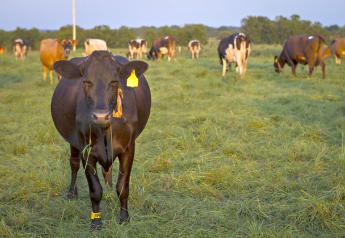Reading caution flags

The level of frustration throughout cattle country has reached a crescendo this summer. Ranchers are in the midst of a market decline that shows scant signs of recovery, yet they find few avenues to manage the growing risk they've accumulated through cattle ownership.
The price of weaned calves has been cut nearly in half since the high tide of October 2014. More critical is the 27% decline in the value of 550-lb. calves since October 2015. That means every semi-load of calves is worth roughly $30,000 less than last fall.
The argument can be made that buyers over-
reacted when they drove markets to their peak two years ago, and a similar argument can be made that the current price correction is over-sold. Such arguments based on the reality of market fundamentals, however, disintegrate when cowboys look at the futures market. They find little evidence those markets represent an accurate picture of reality in the country.
Cattlemen have loudly voiced their concerns about extreme volatility in cattle futures for more than a year. Much of the focus has centered on live cattle contracts which provides few, if any, opportunities for feedlots to manage risk as they were losing hundreds of dollars per head. Wild swings on a daily basis make trading more of a crapshoot than risk management.
Possibly more important to the industry as a whole is the feeder cattle contract, which suffers from similar volatility but with fewer players and less liquidity than its live cattle counterpart. Open interest in feeder futures represents only a fraction of what is found in the live cattle contract, though it represents a critical tool for the stocker operations that supply cattle to feedyards.
The decline in cash prices for feeder cattle beckons ranchers to take a hard look at retaining ownership this year. As an industry, we've encouraged ranchers to work toward retaining ownership because it is one of the best incentives to promote beef quality. When ranchers own at least a share of their calves all the way to harvest they directly receive the benefits from improved genetics, health and management. In turn, feedyards, packers, retailers and consumers all receive more value.
Retaining ownership in today's climate, however, must be navigated under a flag of caution. (See page 7.)
If you've never held your calves past weaning, your market risks grow significantly. That's because you likely have little performance and cost of gain data to help calculate profit/loss projections. Without those projections you're at the risk of a market that has been unforgiving for two years.
Such risk is now compounded by a futures market that shows no sympathy for the smaller players who only hope to manage risk on their livelihood. If you're an established retained ownership player with relationships further down the chain, it might help you add value to your calves. Given the volatility and other uncertainties, retained ownership rookies should probably stand on the sidelines this year.







